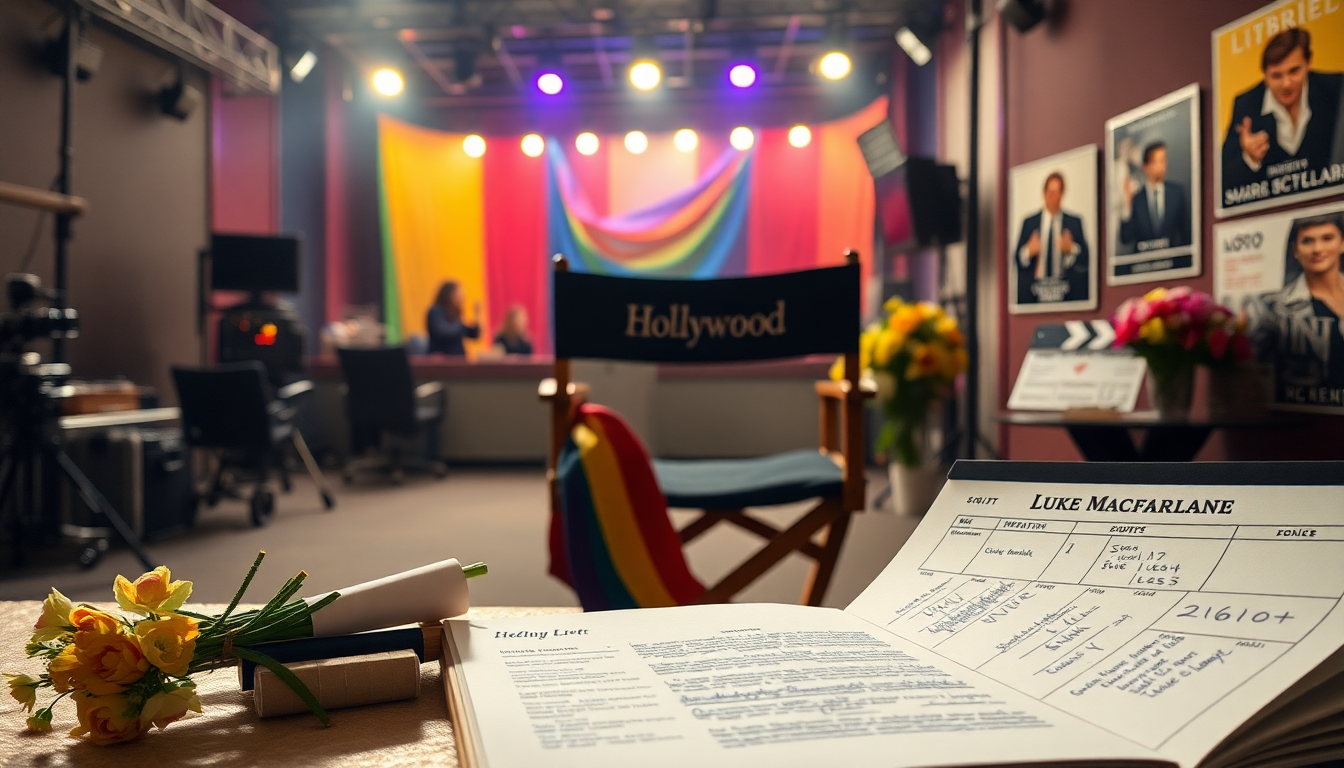Table of Contents
The landscape of Hollywood is continually evolving, especially when it comes to LGBTQ+ representation. One actor who has navigated this terrain with remarkable resilience is Luke Macfarlane. Since coming out in 2008, Macfarlane has made significant strides in portraying LGBTQ+ characters while also breaking stereotypes by taking on heterosexual roles.
His journey is a reflection of a broader shift in the industry towards greater inclusivity and acceptance. But what does this mean for the future of storytelling in Hollywood?
The Journey of Luke Macfarlane
Luke Macfarlane first captured the attention of audiences with his role in the ABC drama “Brothers & Sisters,” where he played the husband of Matthew Rhys’ character.
This role was pivotal, coinciding perfectly with his public coming out. Since then, Macfarlane hasn’t shied away from embracing his identity while showcasing his versatility as an actor. His latest project, Apple TV+’s “Platonic,” sees him stepping into the shoes of a straight character.
Isn’t it refreshing to see such fluidity in roles available to actors, regardless of their sexual orientation?
During the premiere of “Platonic,” Macfarlane highlighted the importance of opportunity in the acting world. He expressed heartfelt gratitude towards director Nicholas Stoller for casting him in a role that challenges the traditional narrative about LGBTQ+ actors.
This sentiment resonates across the industry, where many actors—regardless of their sexual orientation—are eager for opportunities that allow them to showcase their talent in diverse roles. Could this be the beginning of a new era in entertainment?
The Impact of LGBTQ+ Representation
Macfarlane’s body of work is a testament to the changing dynamics of representation in entertainment. He has become a familiar face in Hallmark Channel movies, often taking on roles that reflect both LGBTQ+ and straight narratives. Moreover, he is actively working on developing an LGBTQ+ Christmas movie for Hallmark, a network traditionally known for its family-friendly and often heteronormative storytelling.
How exciting is it to see networks like Hallmark embracing queer stories?
Hallmark’s willingness to embrace these narratives signifies a significant shift in the industry, allowing for stories that resonate with a broader audience. Macfarlane noted the importance of these representations as an escape from the harsh realities faced by the LGBTQ+ community, especially in a political climate that can be hostile. By presenting relatable characters and scenarios, these films contribute positively to the visibility of LGBTQ+ individuals. Isn’t it about time that we see more of these stories on our screens?
The Future of Representation in Film
As the entertainment industry continues to grapple with issues of representation, Macfarlane’s insights shed light on the ongoing journey toward inclusivity. He pointed out that everybody knows someone within the LGBTQ+ community, emphasizing that these stories aren’t just niche; they are integral to our societal fabric. The portrayal of diverse sexual orientations in mainstream media is essential, reflecting the reality of life for many individuals. Are we finally moving towards a more inclusive narrative landscape?
The current trajectory suggests that as more actors like Macfarlane take on varied roles, the stigma surrounding LGBTQ+ representation in film will diminish. The industry is gradually shifting toward a space where talent supersedes traditional labels, enabling actors to seamlessly transition between characters of all types. This evolution not only benefits the actors but also enriches the stories told on screen, making them more representative of our diverse society. So, what’s next for Hollywood? The future looks bright, and we can’t wait to see what unfolds!





